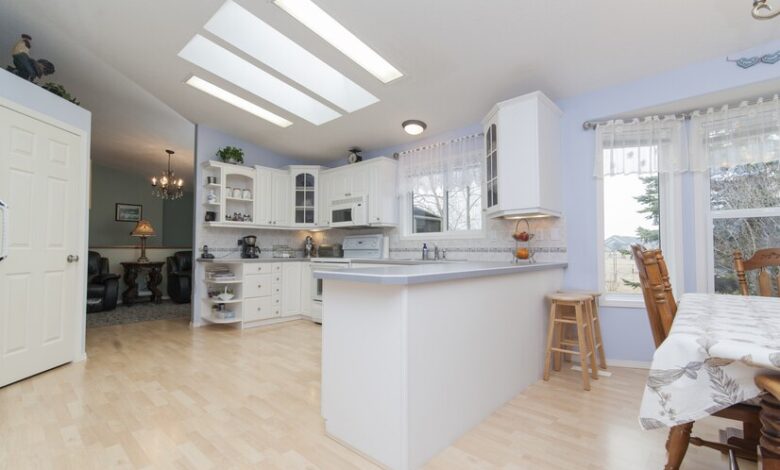Blog
Open Kitchen Design: A Modern Approach to Functional

1. What is Open Kitchen Design?
- Explanation: This section introduces the concept of open kitchen design, where the kitchen space is integrated with the living or dining area, creating an open and seamless flow. Discuss the shift from traditional closed-off kitchens to open-concept designs that promote connection between family members or guests while cooking.
2. Benefits of Open Kitchen Design
- Explanation: Highlight the various advantages of open kitchens, such as improved social interaction, enhanced natural lighting, and a sense of spaciousness. Discuss how the open layout makes entertaining easier and how it helps in maximizing the overall flow of the home.
3. Designing the Perfect Open Kitchen
- Explanation: Focus on key design elements, such as layout considerations, choosing appropriate materials, and selecting functional features. Discuss the importance of a well-thought-out plan to create a balance between aesthetics and practicality, including choosing cabinetry, countertops, and lighting fixtures that align with the overall design theme.
4. Choosing the Right Furniture for Your Open Kitchen
- Explanation: Discuss how to select the right furniture pieces, such as islands, bar stools, and dining tables, that complement the. The goal is to ensure that the kitchen area blends seamlessly with the rest of the living space while offering convenience and comfort for daily tasks and entertaining.
5. Storage Solutions in Open Kitchen Design
- Explanation: Explore the importance of maximizing storage in open kitchen layouts, especially since open kitchens may not have the same wall space as traditional designs. Discuss clever storage solutions like built-in shelving, pull-out cabinets, and hidden compartments to maintain an organized and clutter-free space.
6. Color Palettes and Finishes
- Explanation: Examine how colors and finishes play a significant role in Offer advice on color schemes that can make a space feel welcoming and unified, such as neutral tones or contrasting accent colors. Also, highlight the importance of using finishes like matte, glossy, or textured surfaces to create visual interest.
7. Seamless Integration with Living and Dining Areas
- Explanation: Discuss how the open kitchen should blend seamlessly with adjoining spaces, such as the living or dining areas. Provide ideas on using similar design elements, such as matching flooring or complementary décor, to ensure the kitchen doesn’t feel like a separate entity but an integral part of the home’s overall design.
8. Challenges of Open Kitchen Design

- Explanation: Acknowledge the potential challenges that come with open kitchen layouts, such as noise, odors, and the need for constant tidiness. Offer practical solutions, like installing range hoods, maintaining organized storage, and using smart kitchen appliances to keep things under control.
9. Trends in Open Kitchen Design
- Explanation: Discuss the latest trends in open kitchen design, such as incorporating smart home technology, sustainable materials, or incorporating minimalistic or industrial styles. Highlight how these trends cater to both functionality and modern aesthetics.
10. How Open Kitchen Design Enhances Social Interaction
- Explanation: Explain how open kitchen designs encourage interaction among family members or guests during meal prep and dining. Discuss how the layout fosters a sense of connection, making it ideal for hosting gatherings or simply spending time with loved ones.
11. Is Open Kitchen Design Right for Your Home?
- Explanation: Conclude by helping readers evaluate whether fits their personal preferences and the layout of their homes. Discuss factors like space size, lifestyle needs, and goals to determine if an is the right choice.



